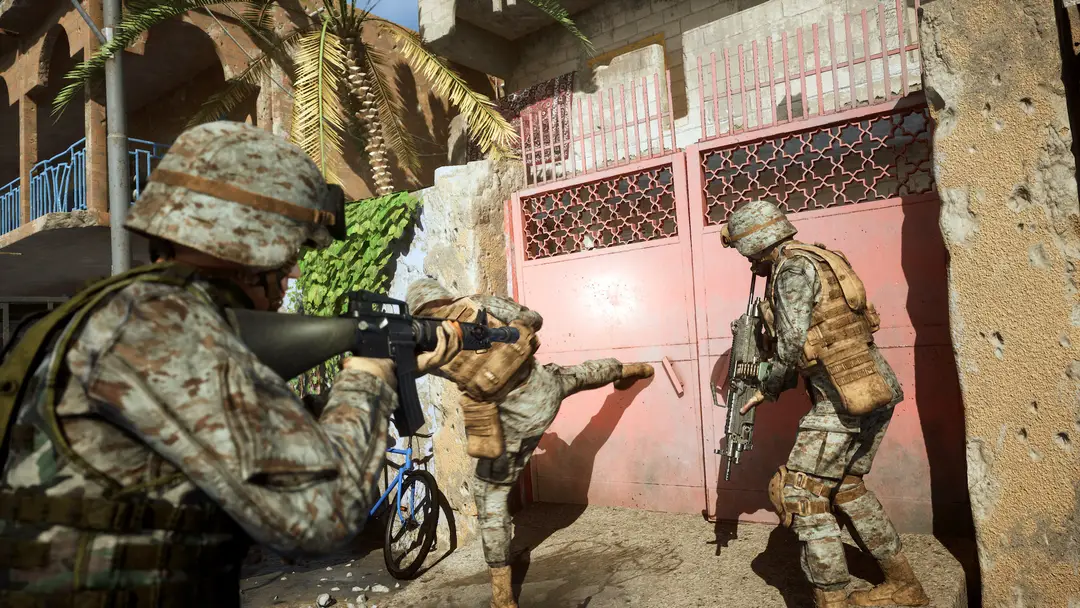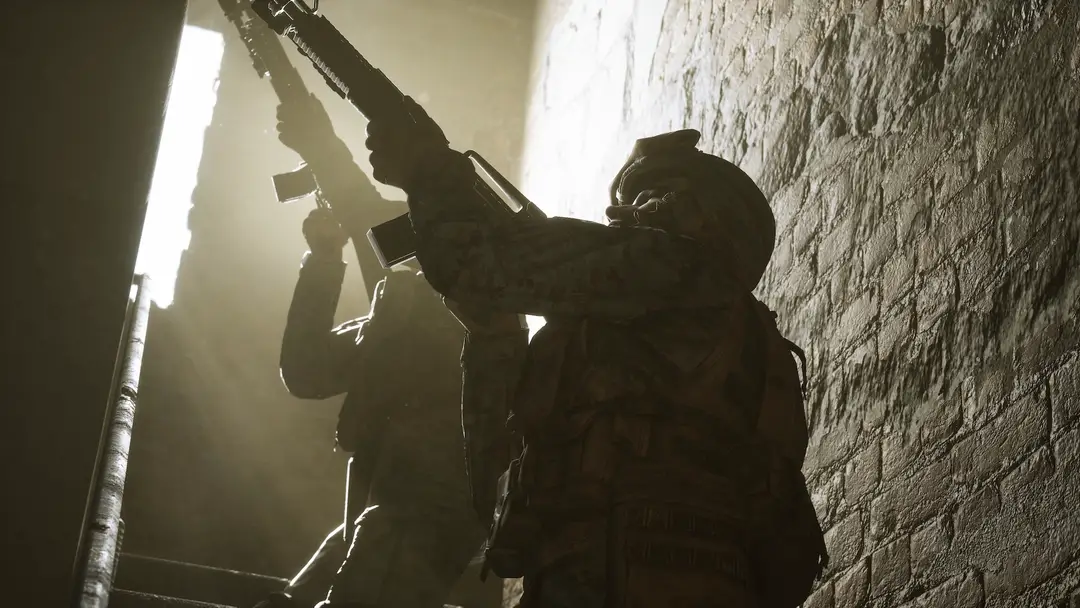
This is a game none of us ever expected to launch. Back in 2009, the controversy behind this impactful conflict was about more than just a video game. The Second Battle of Fallujah (from which the game is based) is marred with many atrocities in one of the bloodiest battles since Vietnam. I remember the announcement of this game, and I remember wondering if it could be handled correctly. There’s not a whole lot available to play yet in this eventual release, given its early access moniker, but Highwire Games and Victura at least seem to be doing their best to direct the tone in the correct way.
Everything opens with a mini-documentary leading you into the war. It’s very sobering, detailing the players involved and the stakes that were on the line. Nothing in the opening leaves you with a “hoo-rah” or bombastic feeling; this is real, and the consequences ahead are truly horrifying. There are a few of these documentaries introducing you to different sections of Six Days in Fallujah, and they all feel relevant. Hopefully once the campaign releases, the scope of it all will come together.
Now, this isn’t a game that plays like almost anything else you’ve messed with in the FPS space. Most will come away thinking it’s difficult, but it’s not. Highwire has opted for a realistic approach, and that isn’t sliding up to a car, firing a clip out in five seconds to take out four enemies, and then booking it for extraction. I can’t even compare it to Rainbow Six, which is still faster than what you’ll experience in Six Days.
Six Days in Fallujah aims for an experience that puts you on the battlefield during a harrowing time for our military forces. This means you’re moving slowly and there’s not much of a HUD; even your comms come through over the radio when in matchmaking. There’s not even a soundtrack to distract you, instead only fearful silence punctuated by gunfire and call outs from the enemy.
Playing the game for the first time leaves you mentally winded. In fact, after the first match, I wonder if it’s even possible to play the fireteam missions by yourself. You can play with up to three other players for a total of four soldiers, with a single chance to respawn if a player makes their way back to the APC. All of the mission types we played, whether trying to capture an enemy headquarters, find and destroy a weapon’s cache, or defend a convoy, felt like the stakes were high and we might not make it through – and we frequently didn’t.
When you load in, you don’t bring a loadout with you from a menu somewhere. Everything is pretty basic, and depending on what the game decides, you’ll have a predetermined kit that can aid you in different ways. I often spawned in with a standard M-16, but occasionally I had a shotgun or light-machine gun. In the spirit of camaraderie, you’ll want to pay close attention to what you get, given you might be better equipped to clear a building or lay down suppressive fire. Know your role and fill it.
If you’ve played a first-person shooter before, you aren’t going to be too taken aback by the gunplay – it’s pretty similar to everything else – but there’s a lot of sway and recoil, especially when moving. Surprisingly, the LMG was easier to handle than I expected, but I wonder if that might be adjusted in the future. You have a pistol to swap to, along with grenades, and largely that’s what you’ll use. I did like the way the grenades were set up, with the ability to throw them far or roll them in. That certainly makes breaching doors a bit simpler in theory.
After receiving our objective and our assignments via the loadouts, it’s time to roll out. Although, you’re doing this very, very slowly. Again, this is intentional, emphasizing what it’s like to be in a war rather than a score-based kill romp. When I move, it’s better to be intentional, and I need to keep my team informed on what I’m doing. Friendly-fire is a thing after all, so it’s better to have everyone’s position in mind at all times. Your kills will be quick, with a few bullets usually felling an enemy, but you are able to be taken out just as quickly, so finding cover is important. If things get too bad, you’ll be incapacitated, and a teammate will have to come over and administer first aid, hopefully before you bleed out.
What strikes you immediately is the environment around you, which is a marvel of digital construction. I say this on two fronts – one, the portrayal of Middle-Eastern urban, war-torn structures is immaculate, and the second, the procedural generation is phenomenal. Not too long ago the team at Highwire introduced us to what they called “Procedural Architecture”. Essentially, the map rewrites itself every time you enter a fireteam mission, with different buildings, lanes, and such in place each time you step foot inside. This levels up the game, and exudes that feeling of “what the heck am I doing here?”. You never know where you’re going, just like the soldiers during those days most likely felt.
One of the things this system creates as well is the ability for your enemies to come from anywhere. I never could get a hang on where the next combatant would appear from, as if they knew the terrain better than I did. These aren’t stupid AI fighters either, but rather guerrilla insurgents that are more than ready to gun you down if you sprint around a corner willy-nilly. Every time we felt like we cleared an area, somehow more enemies would show up, attacking from a direction we weren’t expecting.
This battlefield confusion led to us never actually completing one of these missions, even with some teammates that had played enough to grasp the mission’s intent. That didn’t stop us from being engrossed during our time in each insertion, however. It felt more like a challenge to rise to rather than a poorly designed fire-fight. Six Days In Fallujah isn’t a simple conflict, and that’s an attractive concept in a shooter market that’s often sold on flash.
While there isn’t much more currently available in this early access period beyond a Training mode and basic randomized single missions, I think Six Days In Fallujah is far ahead of what I’d have expected it to be. It’s competent, has an engaging concept, and aims to teach rather than turn its players loose. It also doesn’t make light of its subject matter, which is equally important. Six Days In Fallujah has more (and better) potential now than it did back in 2009, something none of us thought was possible.
Six Days In Fallujah is available in Early Access now on PC via Steam. This is one that we’ll be watching very closely, so stay tuned here at GamingTrend.com for regular updates.



